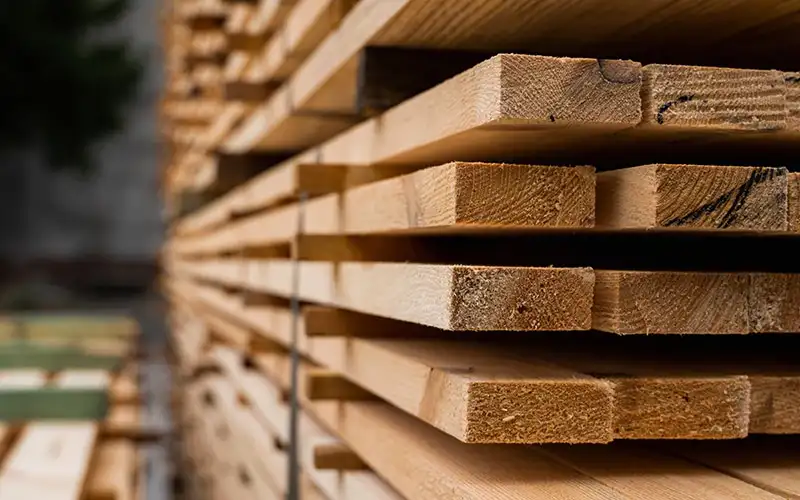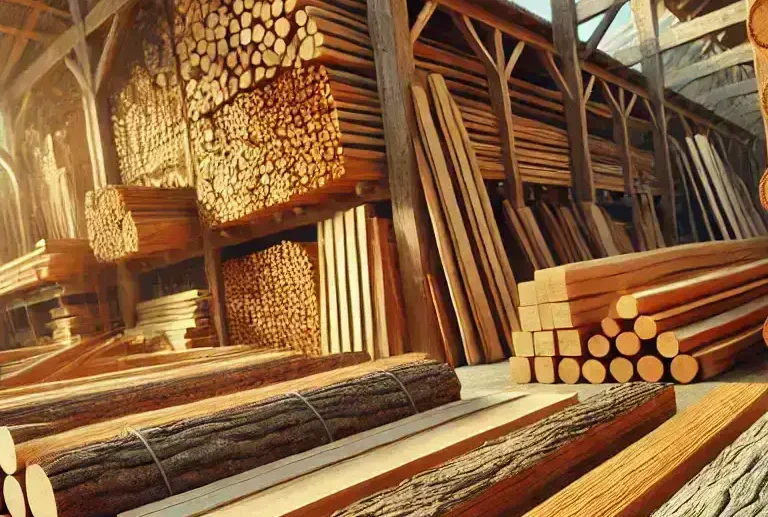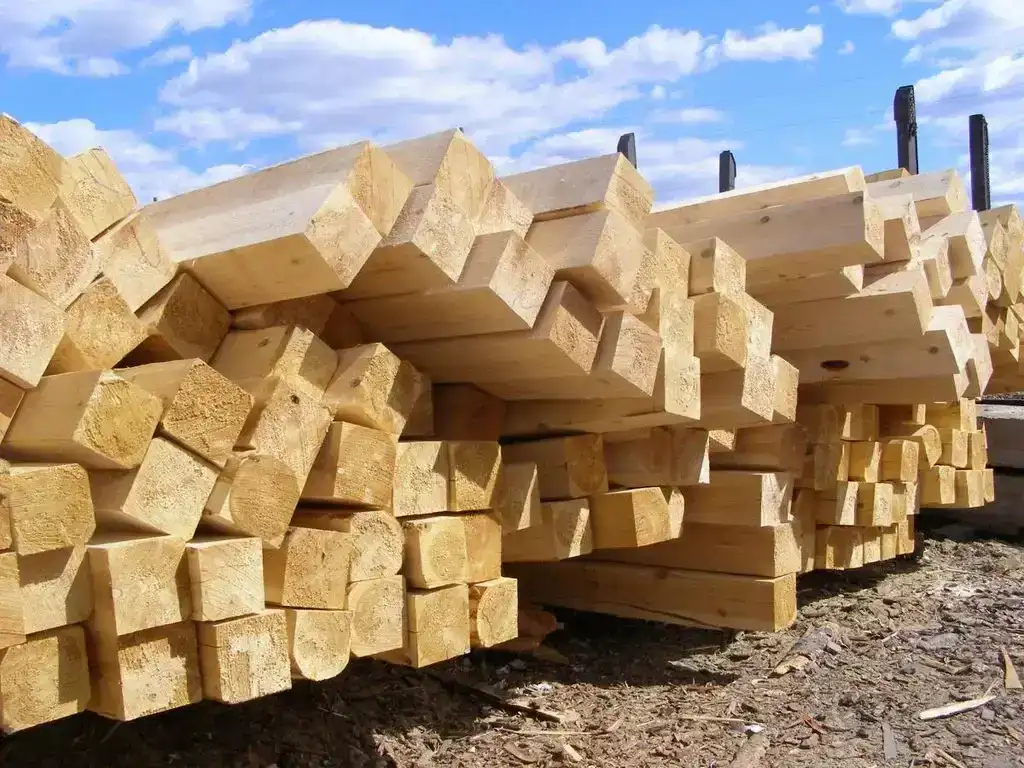Wood is a widely used material in the construction industry. It is valued for its strength, strong texture, and durability. It is used in framing houses and making various furniture such as beds, chairs, cabinets, etc. Different types of wood are used for various purposes. Each type has unique features, uses, and benefits making them suited for various projects.
In this article, we’ll discuss various types of wood used in the construction. We’ll discuss their specific features, benefits, and how they are used in different items. It is essential to understand each type to choose the best according to your project.
Benefits of Using Wood in the Construction Industry

Sustainability: Wood is a renewable useful resource, making it an eco-friendly option for construction.
Strength: Despite being lightweight, wood is strong and can support heavy loads.
Aesthetic Appeal: Wood offers a natural look to homes, with unique stain patterns and warm colors.
Insulation Properties: Wood helps keep buildings hot in winter and cold in summer, which could save on bills.
Easy to use: Wood is easy to cut, form, and install, making construction faster and less difficult.
Cost-Effective: Generally, wood is cheaper than different construction materials, in particular for framing.
Durability: When handled carefully and maintained, wood can last a long time, resisting wear and tear.
Versatility: Wood can be used for numerous purposes, which include flooring, walls, roofs, and furnishings.
Types of Wood Used in the Construction
Here are three major types of wood used in the construction:
Softwood
Softwood comes from coniferous trees. These are the trees that have needles and produce cones. Trees that produce softwood include pine, cedar, and hemlock. This wood is typically lightweight and easy to use. It is used in framing, flooring, and making furniture. Softwood can be cut and shaped quickly, which helps speed up construction.
Pinewood
- Light in color, often yellowish or light brown.
- Straight grain with a smooth texture.
- Relatively soft and easy to work with.
- Commonly used for framing in houses.
- Great for furniture, cabinetry, and flooring.
Cedarwood
- Rich reddish-brown color with a distinctive aroma.
- Naturally resistant to moisture and insects.
- Lightweight and has a fine grain.
- Ideal for outdoor furniture and decking.
- Used for siding and shingles due to its weather resistance.
Firwood
- Light-colored wood, usually white to light yellow.
- Strong and stable with a straight grain.
- Less prone to warping compared to other softwoods.
- Often used for structural beams and framing.
- Suitable for making doors and window frames.
Spruce Wood
- Pale yellow to white with a fine, even texture.
- Lightweight and strong, making it easy to handle.
- Good acoustic properties are often used in musical instruments.
- Frequently used in construction for framing and plywood.
- Commonly used for making crates and pallets.
Hemlock Wood
- Light brown color with a straight grain.
- Slightly more dense than other softwoods.
- Provides good strength and stability.
- Often used for framing and general construction.
- Used in furniture and cabinetry due to its strength.
Hardwood
Hardwood comes from deciduous trees, which lose their leaves in the fall. These trees include oak, ash, beech, and walnut. Hardwood is known for its strong and sturdy characteristics that make it a good option for construction. It is ideal for furniture, cabinets, doors, etc. Hardwood is generally more expensive than softwood. It is difficult to work with hardwood but it stays for a long time.
Oakwood
- Strong and durable with a prominent grain pattern.
- Comes in two main types: red oak (warm tones) and white oak (cooler tones).
- Resistant to wear and tear.
- Widely used for furniture, flooring, and cabinetry.
- Popular for making barrels and wine casks.
Maplewood
- Light in color, often creamy white to light brown.
- Very hard and resistant to scratches.
- Has a fine and even grain.
- Commonly used for kitchen cabinets and furniture.
- Popular for flooring and sports equipment, like bowling alleys.
Beechwood
- Light brown color with a straight, tight grain.
- Hard and strong, making it durable.
- Has a smooth texture and takes stains well.
- Used for furniture, especially in modern designs.
- Commonly used in kitchen items, like cutting boards and utensils.
Walnut Wood
- Rich, dark brown color with unique grain patterns.
- Highly prized for its beauty and strength.
- Moderate hardness, making it easier to work with.
- Often used for high-end furniture and cabinetry.
- Popular for decorative items, like carvings and sculptures.
Ashwood
- Light to medium brown color with a straight grain.
- Strong and flexible, making it good for bending.
- Often has a slightly coarse texture.
- Commonly used for furniture and cabinetry.
- Popular for sports equipment, like baseball bats and hockey sticks.
Teakwood
- Golden to dark brown color with a rich grain.
- Naturally oily, resistant to water and pests.
- Durable and weather-resistant.
- Ideal for outdoor furniture and decks.
- Used in boat building and high-end cabinetry.
Engineering Wood
Engineering wood is made with a combination of different woods to create a strong and sturdy material specific for construction purposes. This includes products like plywood, oriented strand board (OSB), and laminated veneer lumber (LVL). It is commonly used for beams, floor panels, and wall systems. It is a solid lumber, resistant to damage. It can be manufactured in large sizes which makes it the best option for big construction projects.
Plywood
- Made by gluing thin layers (or “plies”) of wood together.
- Layers are placed at right angles, making it stronger.
- Durable and resistant to cracking, bending, and shrinking.
- Comes in various thicknesses and grades.
- Furniture making, especially cabinets and shelves.
- Walls, floors, and roofing in building construction.
- Used in DIY projects and crafts.
High-Density Fiberboard (HDF)
- Made by compressing wood fibers under high pressure.
- Much denser than other types of fiberboard.
- Very smooth and flat surface, easy to paint or laminate.
- Strong and resistant to warping.
- Ideal for making doors and cabinetry.
- Used for flooring, particularly in laminate flooring.
- Great for decorative panels and moldings.
Laminated Veneer Lumber (LVL)
- Layers of thin wood veneers glued together.
- Each layer is oriented in the same direction for added strength.
- High strength and stability, similar to solid wood.
- Great for heavy-duty uses.
- Often used for beams, headers, and structural framing.
- Useful in load-bearing parts of buildings.
- Common in construction for floors and roofs.
Oriented Strand Board (OSB)
- Made by pressing wood strands together with adhesives.
- Designed to be strong and stable.
- Durable and water-resistant when sealed.
- Typically more affordable than plywood.
- Used as wall sheathing and roofing material.
- Common in flooring and subflooring.
- Ideal for construction projects needing a sturdy, low-cost option.
Conclusion
Wood is known for its strength, strong texture, and durability making it a good option in construction projects. It is used in framing houses and making various furniture such as beds, chairs, cabinets, etc.
Different types of wood are used for various purposes. Each type has unique features, uses, and benefits making them suited for various projects. It is important to understand the features of each type of wood to choose the best according to your project needs.


